A worker wishes to pile up sand on to a circular area of radius . No sand is to spill on to the surrounding area. If is the coefficient of static friction sand particles, then choose the correct statement (s)
The greatest height of sand pile that can be created is .
The greatest height of sand pile that can be created is
Minimum work required to create greatest height sand pile is . Where is the density of sand volume
Sand pile will be in stable equilibrium
The correct Answer is:A, C
From free body diagram of sand particle
work required
The system is in unstable equilibrium.
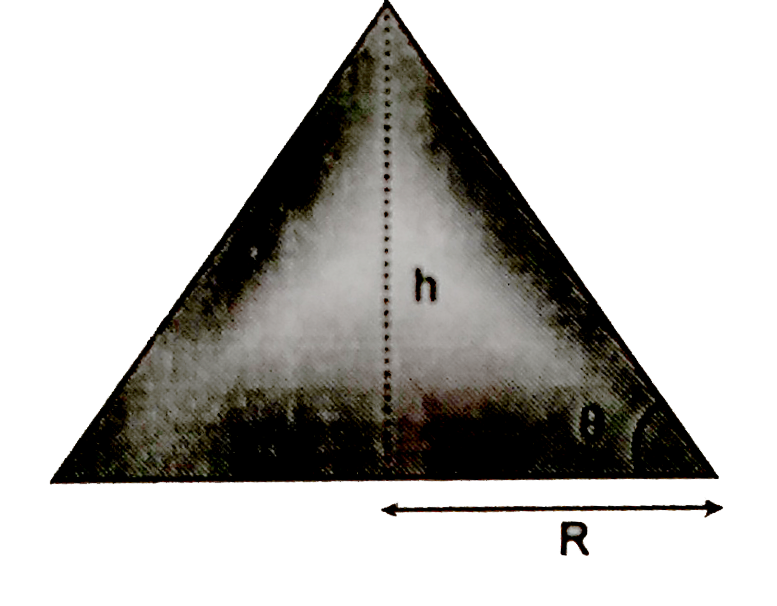
Topper's Solved these Questions
- TEST PAPERSBOOK - FIITJEECHAPTER - TEST PAPERSEXERCISE - PHYSICS
747 Videos
- SIMPLE HARMONIC MOTIONBOOK - FIITJEECHAPTER - SIMPLE HARMONIC MOTIONEXERCISE - Assignment Problems (Objective) (Level-II)
20 Videos
- WORK, ENERGY AND POWER BOOK - FIITJEECHAPTER - WORK, ENERGY AND POWER EXERCISE - COMPREHENSIONS ( Comprehension-II)
5 Videos
Similar Questions
A worker wishes to pile up sand on to a circular area of radius R. No sand is to spill on to the surrounding area. If μs is the coefficient of static friction of sand on sand,the sand pile . Density of sand =ρ
View SolutionA worker wishes to pile a cone of sand onto a circular area in his yard. The radius of the circle is r,and no sand is to spill on to the surrounding area. If μ is the static coefficient of friction between each layer of sand along the slope and the sand, show that the greatest volume of sand that can be stored in this manner is 13πμR3.
View Solution
Knowledge Check
If you want to pile up sand onto a circular area of radius R. The greatest height of the sand pile that can be created without spilling the sand onto the surrounding. Area, if μ is the coefficient of friction between sand particle is:
Aμ2RBμRCRDRμThe greatest height h of the sand pile that can be erected without spilling the sand onto the surrounding circular area of radius R (If μ is the coefficient of friction between sand particles) is
ARBRμCμRDμ2RA ring of mass M and radius R sliding with a velocity v0 suddenly enters inthrough surface where the coefficient of friction is μ, as shown in figure.
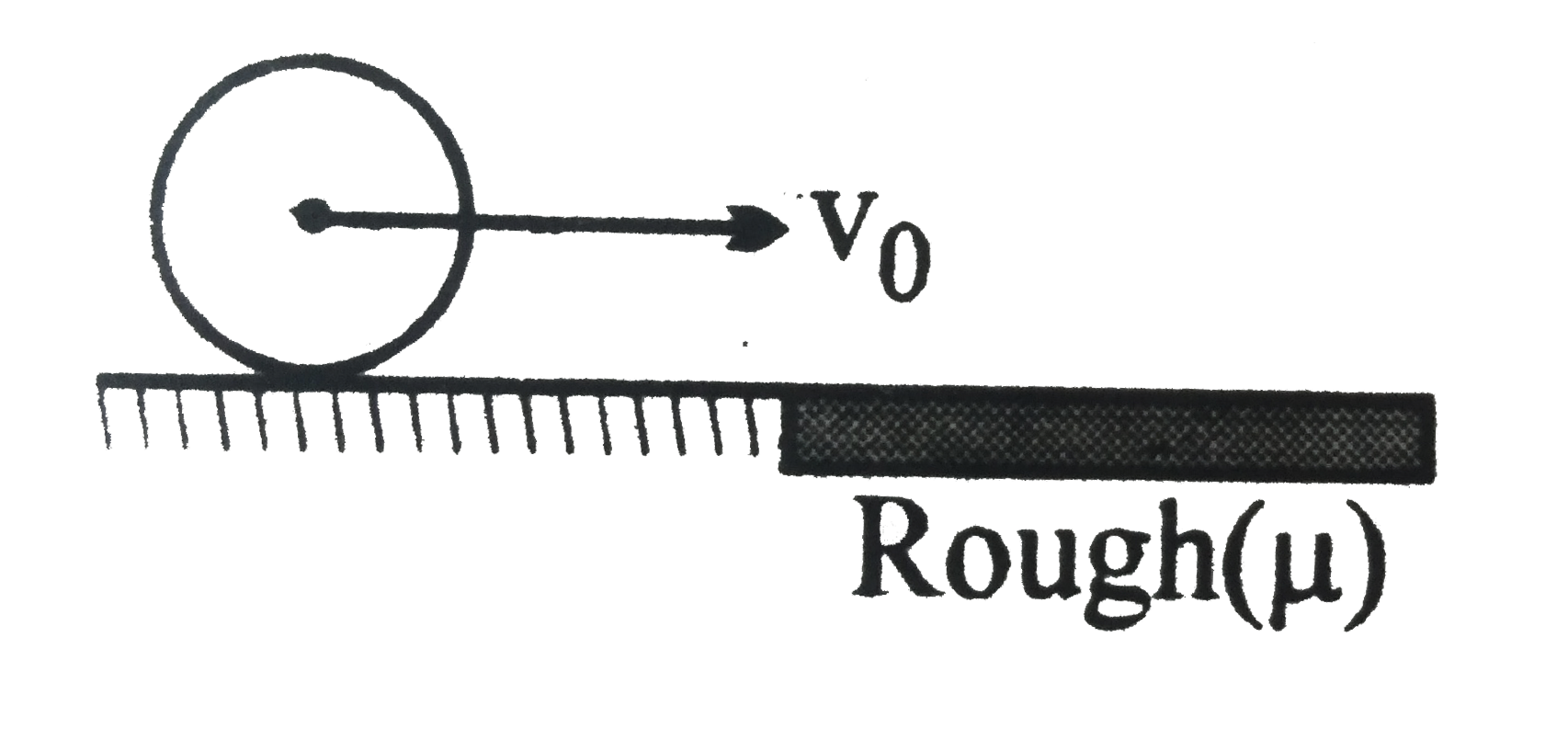 .
.
Choose the correct statement (s).AThe linear distance moved by the centre of mass before the ring starts rolling is 3v208μgBThe net work done by friction force is −38mv20CThe loss is kinetic energy of the ring is mv204DThe gain in rotational kinetic energy is +mv208.
A ring of mass M and radius R sliding with a velocity v0 suddenly enters inthrough surface where the coefficient of friction is μ, as shown in figure.
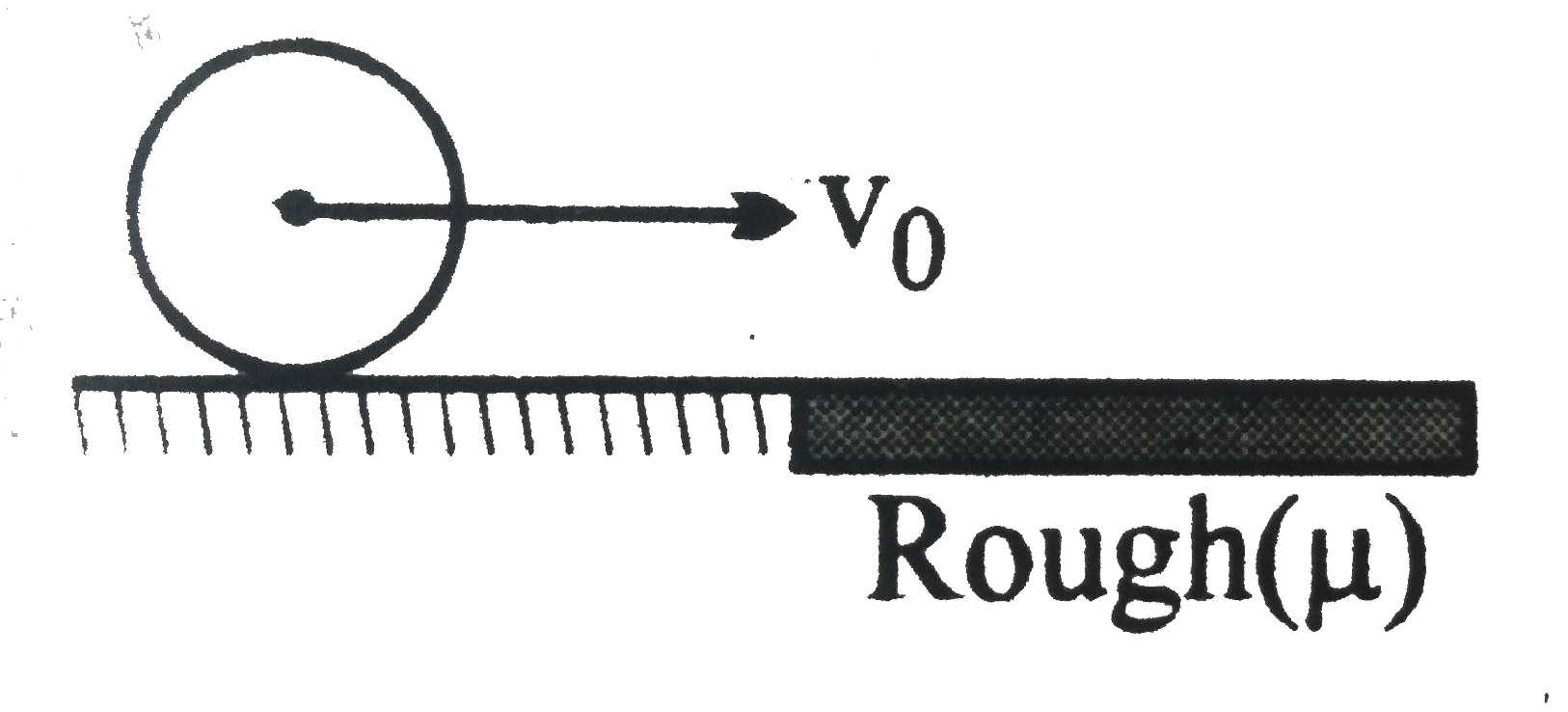 .
.
Choose the correct statement (s).
View SolutionA ring of mass M and radius R sliding with a velocity v0 suddenly enters inthrough surface where the coefficient of friction is μ, as shown in figure.
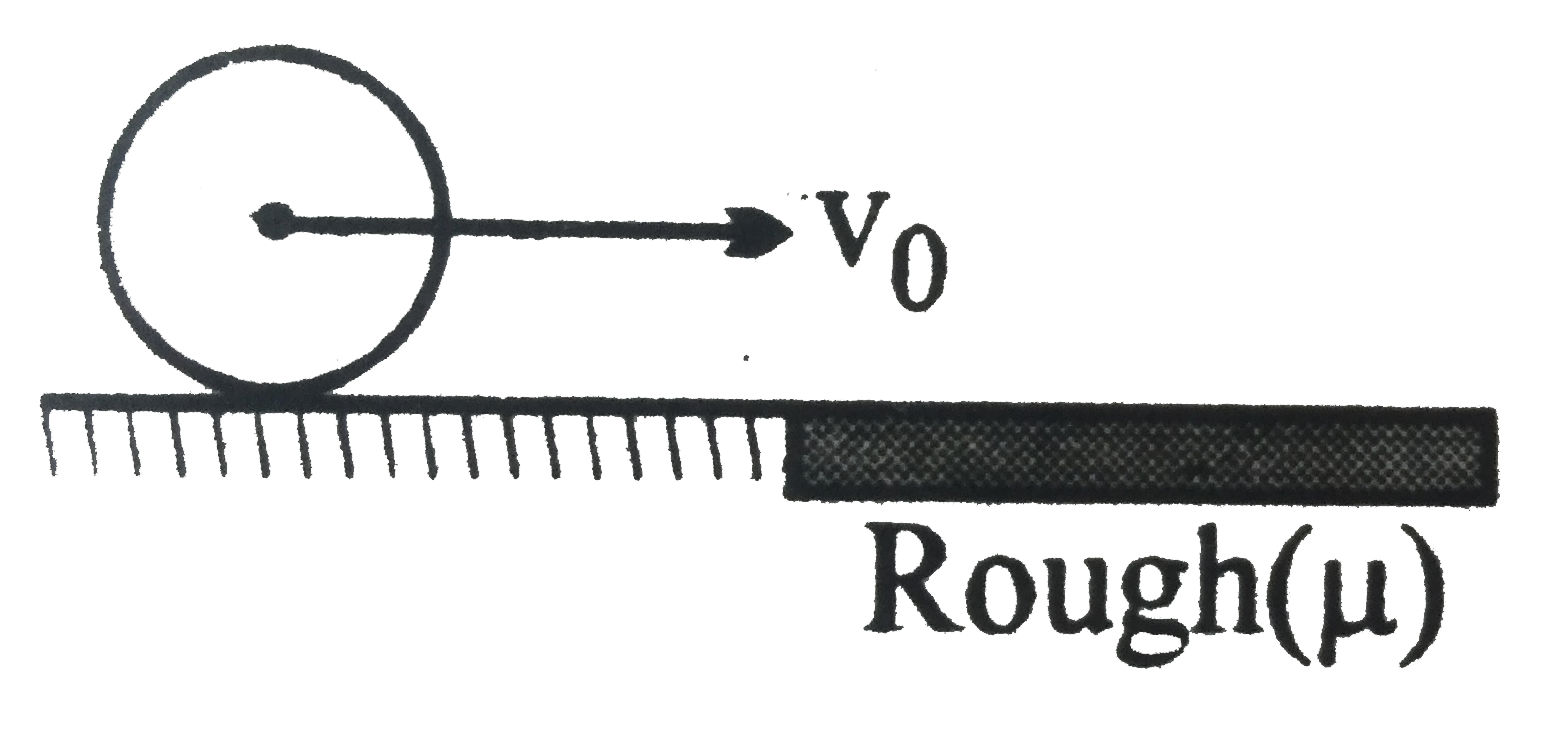 .
.
Choose the correct statement (s).
View SolutionA ring of mass M and radius R sliding with a velocity v0 suddenly enters inthrough surface where the coefficient of friction is μ, as shown in figure.
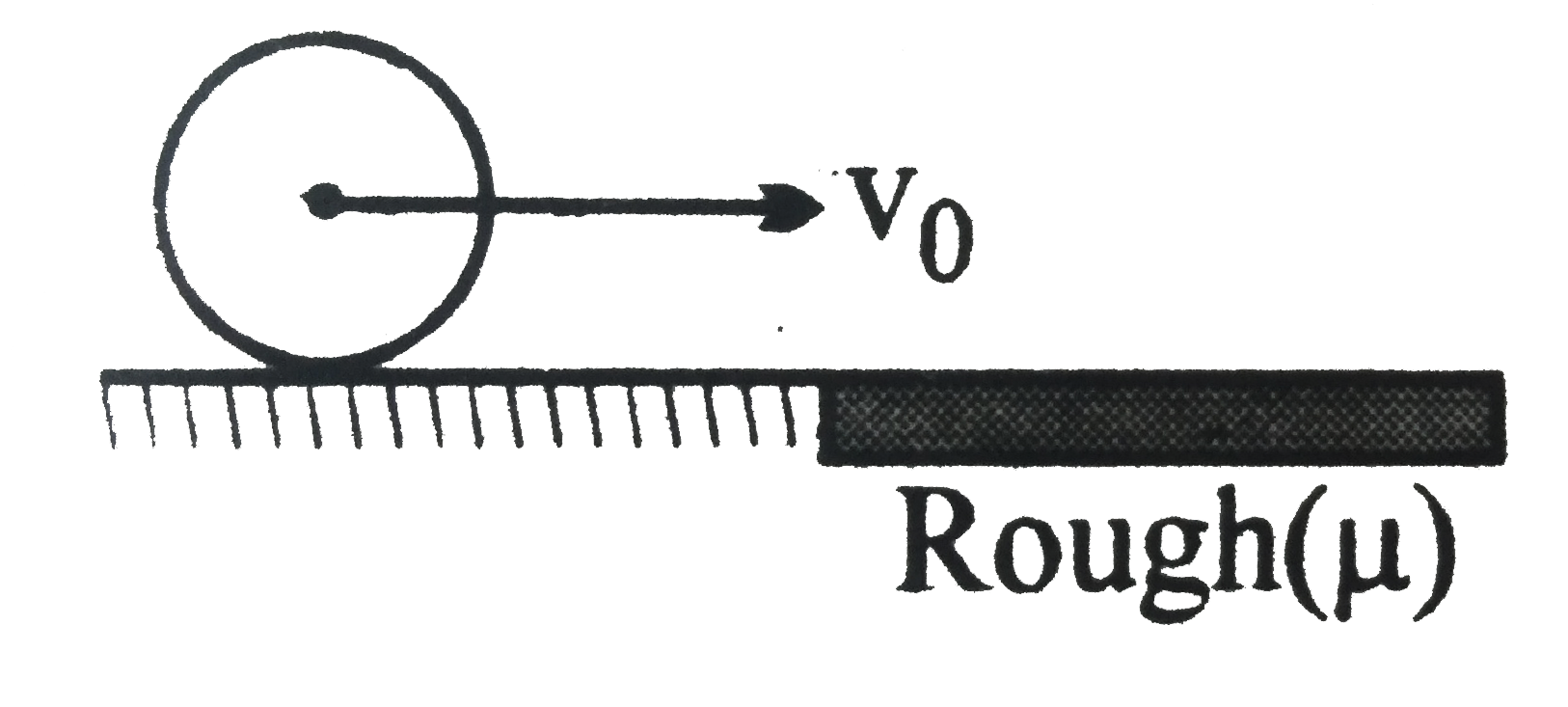 .
.
Choose the correct statement (s).
View SolutionIf coefficient of static friction is μs and coefficient of kinetic friction is μk , which one is correct ?
View SolutionA house is built on the top of a hill with 45∘slope Due to the sliding of meterial and sand top from top to the bottom of till , the slip angle has been redaced if the coefficient of static friction between sand particles is 0.75 what is the final angle attated by bill ? (tan−10.75=37∘)
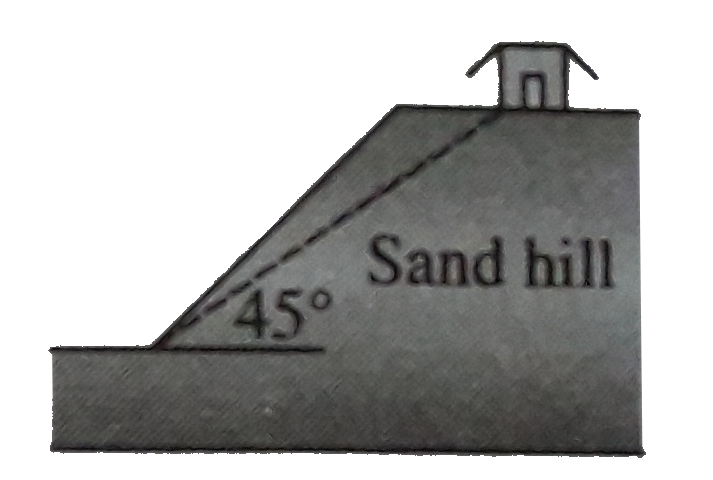
View Solution
